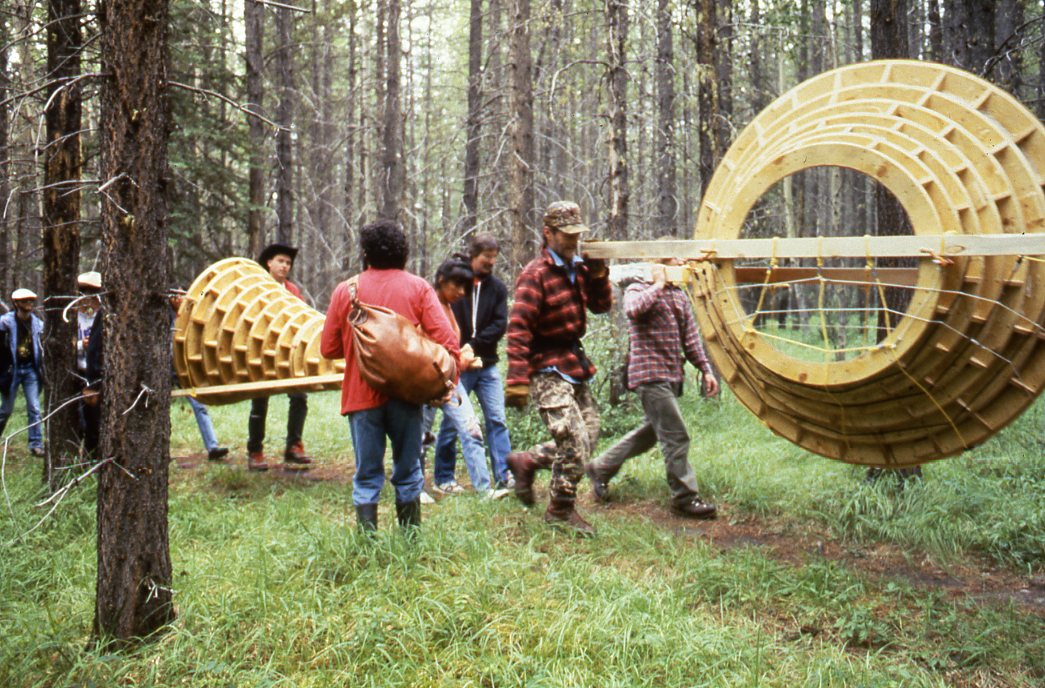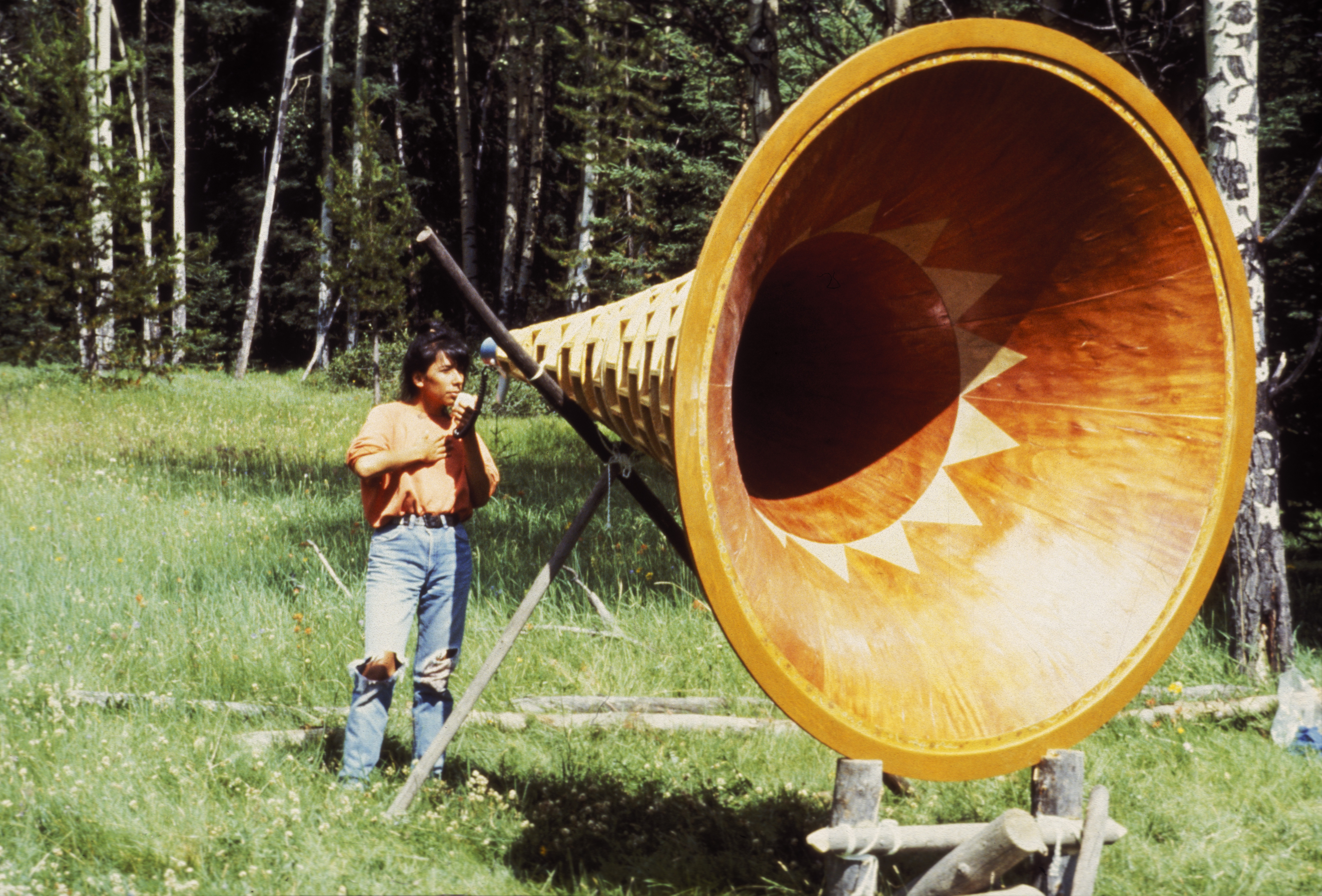Creative Voices: 1991 - Rebecca Belmore Gave the Voiceless a Megaphone

Anishinaabe artist Rebecca Belmore wanted to make art that would spark conversation between Indigenous people and the Canadian government — and she wanted to make something that would help people speak for themselves.
At Banff Centre in 1991, she sketched plans for a giant megaphone to serve as mouthpiece. But instead of directing it to the government, Belmore wanted to use the sculpture to speak to the land.
Ayum-ee-aawach Oomama-mowan: Speaking to Their Mother is six feet wide, seven feet long and made of all organic materials. The conical shape further amplifies the megaphone that is sometimes inserted into its mouth.
Before Belmore first spoke into the megaphone, the sculpture was carried through the woods and assembled in a meadow near Johnson Lake in the Bow Valley. Her words echoed through the mountains and, she hoped, reached Mother Earth.
The piece was a response to the Oka Crisis of 1990 — a protest against a proposed golf course on Mohawk territory in Quebec. But after its 1991 debut at the Between Views and Points of View exhibition at our Walter Phillips Gallery, it was used to address the land at political demonstrations from coast to coast.
“I was particularly interested in locating the Aboriginal voice on the land. Asking people to address the land directly was an attempt to hear political protest as poetic action,” Belmore told Banff Centre’s Inspired report in 2008.
The wood and animal hide components came apart to make it easier to transport. Indeed, Belmore developed a personal relationship with the work, when she toured it across Canada, often sleeping beside it in her van.
Stopping at reserves and significant sites, Belmore encouraged the local community to address the land through her megaphone in their own language. The piece is well travelled, having spoken to a clear-cut forest, Indigenous land claims, and even making it as far as Parliament Hill.
As an artist, Belmore became internationally recognized. She was the first Indigenous woman to represent Canada at the Venice Biennale in 2005, won the 2013 Governor General’s Award for visual art, and has exhibited at many national and international venues.
In 2007 the piece, along with audio and visual documentary of its travels, was purchased for Banff Centre’s permanent collection. The sculpture now sits in an alcove of the Kinnear Centre on our campus.
“Banff is naturally the best place for this artwork to reside,” said Belmore. “I hope that by leaving it in the care of the collection that it will continue to have a life of its own.”
